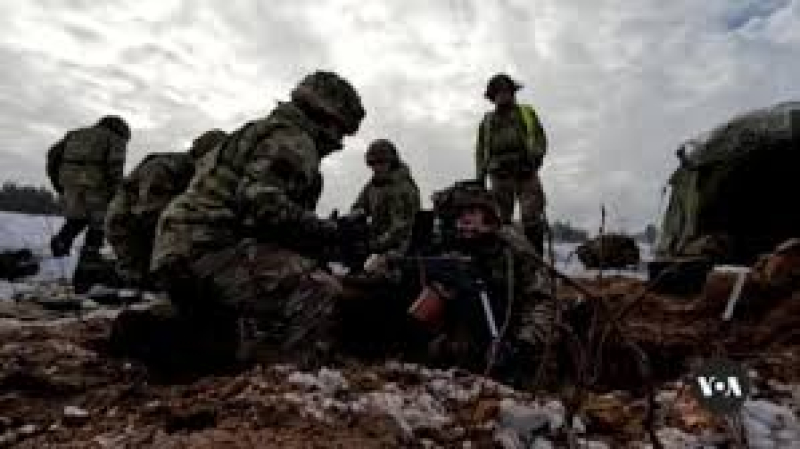- Inqilab Monch Seeks Home Adviser’s Exit |
- UN Calls for Calm in Bangladesh After Protest Leader’s Killing |
- DMP issues 7 traffic directives for Osman Hadi’s Janaza |
- Vested quarter fuelling chaos to impose new fascism: Fakhrul |
- Hadi’s namaz-e-janaza at 2:30pm Saturday |
90,000 NATO Troops in Biggest Military Exercises Since Cold War

NATO began its biggest military exercises since the Cold War this week, with tens of thousands of troops set to move across Europe in a show of force meant as a warning to Russia, following its full-scale invasion of Ukraine.
Operation Steadfast Defender 24 will see some 90,000 NATO military personnel take part in a range of drills across Europe in coming months. Fifty naval vessels, 80 aircraft and over 1,000 combat vehicles are involved.
The exercises “will show that NATO can conduct and sustain complex multi-domain operations over several months, across thousands of kilometers, from the high north to central and eastern Europe, and in any condition,” the 31-nation alliance said.
Logistics
“We do all of this to show we have the readiness, preparedness and the forces in place to remove any room for miscalculation or misunderstanding in Moscow about our readiness to protect every inch of NATO territory. And as long as we do that there will be no attack against NATO territory,” NATO Secretary-General Jens Stoltenberg told reporters in Brussels Tuesday.
The logistical challenge of moving soldiers and equipment is a vital part of the exercise, said Liana Fix, fellow for Europe at the Council on Foreign Relations in Washington.
“How do they get there? And how do they get there quick? Because the war in Ukraine has shown that being too slow means that a part of your territory can be occupied and has to be re-conquered, rather than defending that territory the moment the attack happens,” Fix told VOA.
Sweden, which hopes to join NATO in coming months, will also take part in the operation, the biggest NATO drill since the Reforger exercises of the 1980s. Hungary is the only NATO member yet to ratify Sweden's application.
Ukraine
The exercises come ahead of the two-year anniversary of Russia’s invasion of Ukraine, on February 24. The conflict has descended into a war of attrition, with neither side seemingly able to make significant territorial gains.
While NATO flexes its muscles in Europe, Kyiv is running low on ammunition, as military aid packages in both the United States and the European Union remain blocked by political infighting.
“The narrative from Ukraine is that Ukraine is defending NATO. And that is a valid narrative if one follows the logic that Ukraine is actually diminishing Russia’s army, has diminished Russia’s army, and has diminished the military threat that Russia poses to the NATO alliance. So from Ukraine’s perspective, it must be a lonely moment to watch this NATO exercise,” analyst Liana Fix told VOA.
Artillery
NATO this week signed a $1.2 billion contract to buy some 220,000 rounds of artillery ammunition. The alliance says it will pass on the shells to Ukraine, which has complained of ammunition shortages, or to member states that want to replenish stockpiles that have been depleted through supplying Ukrainian forces, reports VOA.
“This is important to defend our own territory, to build up our own stocks, but also to continue to support Ukraine,” said NATO chief Stoltenberg.
“We will support Ukraine with the systems and the weapons and ammunitions they need to prevail as a sovereign independent country, because we cannot allow (Russian) President (Vladimir) Putin to win in Ukraine. That would be a tragedy for the Ukrainians and dangerous for all of us,” he added.

